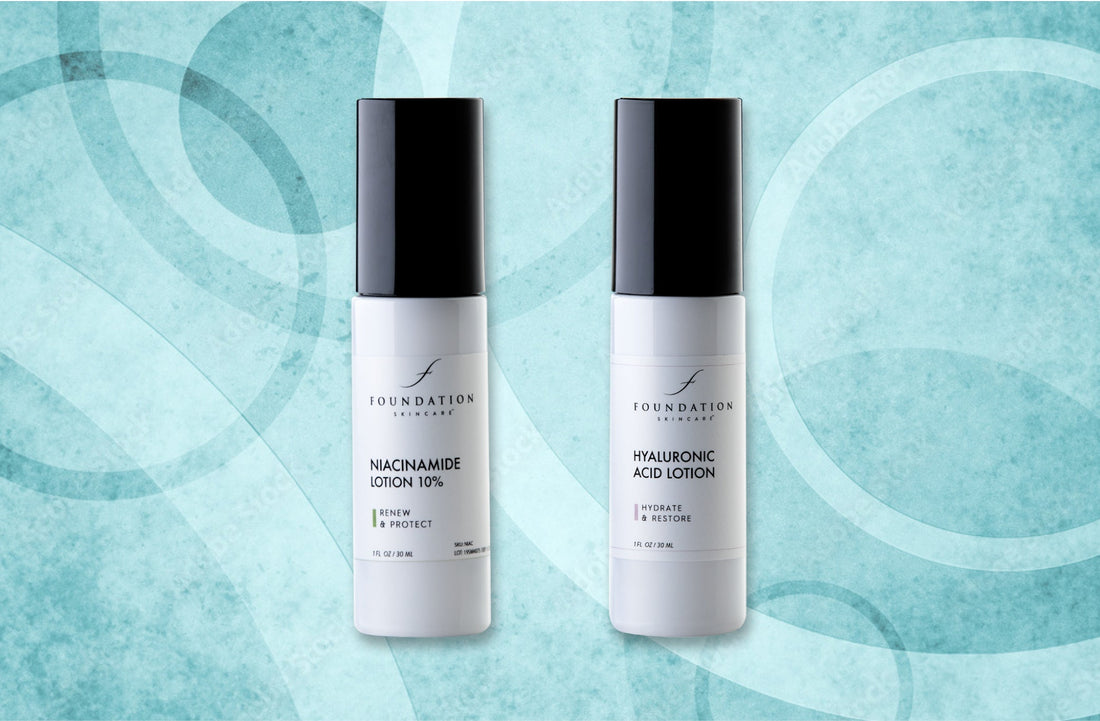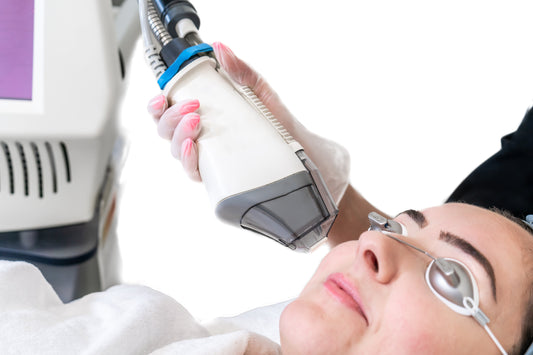We hear plenty of skincare layering questions, but recently, there’s one that we’ve been hearing quite a lot: “what order do I apply niacinamide and hyaluronic acid?” Both of these ingredients have taken center stage in the skincare world, so it’s no wonder people want to know how to apply them to maximize their benefits. Niacinamide and hyaluronic acid are both multi-tasking ingredients that are beneficial for all skin types, and when used regularly and layered properly, they can help transform the look and feel of the complexion.
Benefits of Niacinamide
Niacinamide is a B vitamin with powerful anti-inflammatory properties. When applied to the skin, it increases the production of ceramides1 and supports the creation of keratin2 and other essential proteins. It also helps with DNA repair in the skin’s cells.3
As you can imagine, these effects lead to a range of benefits for the skin. Niacinamide is known to help control the production of sebum, which can lead to more refined pores and a lower risk of breakouts. The ingredient may also fade the appearance of pigmentation to promote a more even skin tone. Additionally, the anti-inflammatory properties of niacinamide are great for reducing redness and inflammation tied to conditions like eczema and acne.
The B vitamin is also an excellent tool for strengthening the skin barrier and improving the skin’s ability to retain moisture. This lowers the risk of the skin becoming dry, and also bolsters the skin’s ability to defend itself against environmental aggressors.
If you want to harness the power of niacinamide in your routine, try the dermatologist-formulated Foundation Skincare Niacinamide Lotion. This formula is made with a potent 10% concentration of niacinamide, as well as additional ingredients that moisturize and calm the skin.
Niacinamide Lotion 10%
• Helps retain moisture and elasticity
• Reduces inflammation & redness
Sale price
$45
What Does Hyaluronic Acid Do For The Skin?
Hyaluronic acid is one of the most impressive humectants used in skincare solutions. It’s able to attract and lock water into the skin, holding nearly 1000 times its weight in water.4 This molecule is found naturally in the body, although production does decrease as we age.
Thanks to its humectant abilities, hyaluronic acid restores the skin’s moisture levels while improving its ability to retain water.5 By fighting dryness, it also plumps the skin and can help soften the appearance of fine lines and wrinkles.6 One benefit that isn’t as widely known is that hyaluronic acid can even play a role in accelerating wound repair.7
Anyone looking to add hyaluronic acid to their routine should try the Foundation Skincare Hyaluronic Acid Lotion. This gentle, expertly crafted formula douses the skin with this humectant to deeply hydrate and restore, and doesn’t contain any additional filler or “fad” ingredients. It can be safely layered with the Foundation Skincare Niacinamide Lotion, as well as other active ingredients you may already use in your routine.
How To Layer Them
Let’s get down to the big question: do you apply niacinamide or hyaluronic acid first? These ingredients are safe to layer, but when it comes to the order that you apply them, it ultimately depends on the specific products you’re using.
In order to maximize the absorption potential of all topical products you’re using, you’ll want to follow the thinnest to thickest rule. We’ll use the Foundation Skincare Niacinamide Lotion and the Foundation Skincare Hyaluronic Acid Lotion as an example. Since the Niacinamide Lotion has a thinner consistency, you’ll apply that first, right after cleansing the skin. After that, you can apply the Hyaluronic Acid Lotion, which has a thicker consistency. Both of these ingredients can be used both day and night, if desired.





